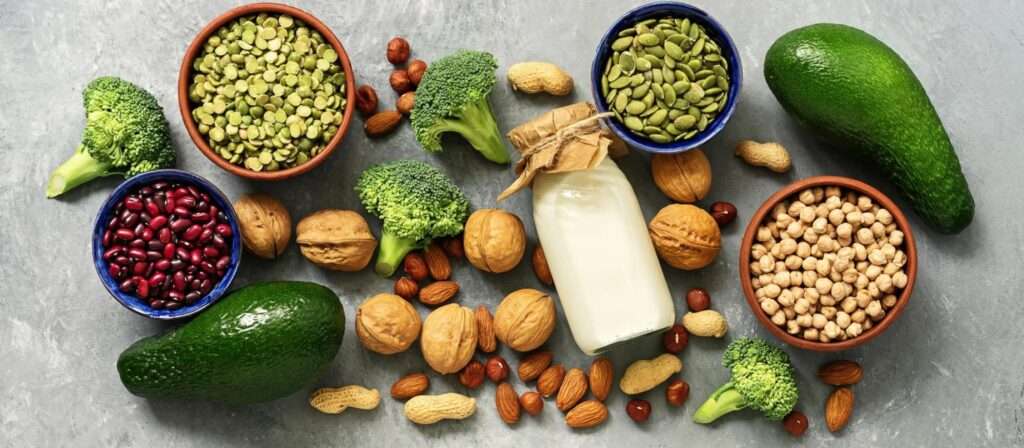Veggies may make a big impact, even if losing weight is sometimes a difficult road. Vegetables are a great option for weight reduction since they are high in fiber and low in calories. They are also brimming with vital minerals, vitamins, and antioxidants that promote general well-being. We’ll look at some of the finest veggies for weight reduction in this post, along with tips for include them in your diet.
The Best Vegetables for Weight Loss
Spinach

A leafy green vegetable, spinach is well-known for both its outstanding nutritional profile and its culinary flexibility. Rich in calcium, iron, folate, and vitamins A, C, and K, spinach has several health advantages. Spinach can lower blood pressure, improve heart health, minimize oxidative stress, and enhance eye health when consumed regularly. Its high fiber content facilitates weight management and helps with digestion. Savoy, flat-leaf, and semi-savoy spinach are among the varieties available; baby spinach is a favorite for salads. Whether it’s consumed uncooked in salads or cooked in casseroles, stews, and soups, spinach gives a healthy boost to any cuisine. Spinach is a wonderful addition to any garden, providing a fresh supply of vegetables that are easy to cultivate in chilly weather.
Broccoli

A vegetable high in nutrients, broccoli is distinguished by its tree-like form and health advantages. It belongs to the family of cruciferous vegetables, which also includes Brussels sprouts, cabbage, and cauliflower. Broccoli has an abundance of antioxidants, vitamins, and minerals. It is a great source of potassium, vitamin K, folate, and C. It also includes substances with potential anti-cancer effects, including as sulforaphane. Raw or cooked, broccoli is a versatile vegetable that works well in a variety of recipes. You may stir-fry, roast, steam, or add it to salads and soups. Consuming broccoli may lower your chance of developing chronic illnesses and improve your general health.
Cauliflower

Cauliflower is a versatile and nutritious vegetable that belongs to the Brassicaceae family, which also includes broccoli, cabbage, and kale. It is known for its dense, white flower head, called the “curd,” which is surrounded by green leaves. Cauliflower is rich in vitamins and minerals, including vitamin C, vitamin K, folate, and potassium. It also contains antioxidants and fiber, which are beneficial for digestion and overall health. Cauliflower can be enjoyed raw or cooked in various ways. It can be roasted, mashed, steamed, or used as a low-carb alternative to rice or pizza crust. Its mild flavor makes it a versatile ingredient in many dishes, from soups and salads to curries and stir-fries. Including cauliflower in your diet can help boost your intake of essential nutrients and support a healthy lifestyle.
Bell Peppers

Bell peppers, often referred to as sweet peppers or capsicums, are colorful, crunchy vegetables that are available in red, yellow, orange, and green hues. They are abundant in antioxidants and vitamins, especially vitamin C, which is critical for healthy skin and a strong immune system. Bell peppers are also a good source of fiber, vitamin B6, and vitamin A. Bell peppers come in varied hues that correspond to different stages of maturity; red peppers are the ripest and tastiest. Bell peppers are frequently used in salads, stir-fries, fajitas, and other recipes. They can be consumed fresh or cooked. They are a versatile component in many different cuisines and give a sweet and crunchy flavor to meals. Bell peppers can help you consume more vital nutrients by adding them to your diet.
Cucumber

Cucumbers are refreshing and hydrating vegetables that belong to the Cucurbitaceae family, which also includes melons and squash. They are composed mostly of water, making them a low-calorie and hydrating snack. Cucumbers are rich in vitamins and minerals, including vitamin K, vitamin C, potassium, and magnesium. They also contain antioxidants, such as beta-carotene and flavonoids, which help protect the body from oxidative stress and inflammation. Cucumbers can be eaten with or without the skin, depending on personal preference, and are commonly used in salads, sandwiches, and as a garnish.
Kale

The leafy green vegetable kale is a member of the Brassica oleracea family, which also contains Brussels sprouts, cabbage, and broccoli. Its strong nutritional profile and curled leaves are its most notable features. One of the healthiest foods available is kale, which is abundant in vitamins, minerals, and antioxidants. It has a very high manganese, vitamin C, vitamin A, and vitamin K content. Antioxidants like beta-carotene and quercetin, which are found in kale, also aid in shielding the body from inflammation and oxidative stress. Furthermore low in calories and an excellent source of fiber, kale is a fantastic option for managing weight. Raw kale is great in salads; it may also be sautéed, boiled, or incorporated into smoothies. Adding kale to your diet might increase the amount you consume.
Carrots

Carrots are root vegetables that are well-known for their bright orange color and sweet flavor. They are a rich source of beta-carotene, which is converted into vitamin A in the body and is essential for good vision, especially in low light. Carrots are also packed with fiber, vitamin K1, potassium, and antioxidants, which can help reduce the risk of cancer and heart disease. These vegetables are incredibly versatile and can be eaten raw as a snack, added to salads, or cooked in various dishes such as soups, stews, and stir-fries. Their natural sweetness makes them a popular ingredient in cakes and desserts as well. Including carrots in your diet can provide a range of health benefits and add color and flavor to your meals.
Zucchini

Zucchini, also known as courgette, is a summer squash that is popular for its mild flavor and versatility in cooking. It is a low-calorie vegetable that is rich in vitamins, minerals, and antioxidants. Zucchini is a good source of vitamin C, vitamin A, potassium, and fiber. It also contains antioxidants like lutein and zeaxanthin, which are important for eye health. Zucchini can be eaten raw in salads or cooked in a variety of ways, such as grilled, sautéed, or baked. It is commonly used as a substitute for pasta in dishes like zucchini noodles or “zoodles.” Zucchini is a great addition to a healthy diet, as it is low in calories but high in nutrients, making it a nutritious and delicious vegetable to enjoy year-round.
Brussels Sprouts

Brussels sprouts are little green veggies that resemble miniature cabbages. They are a member of the Brassicaceae family, which is also made up of kale, broccoli, and cabbage. These veggies are nutrient-dense and provide a host of health advantages. They are a great source of fiber, manganese, folate, and vitamins C and K. Antioxidants and other chemicals found in Brussels sprouts may also help lower inflammation and enhance heart health. These veggies work well in salads when eaten fresh or sautéed, steaming, or roasted. Brussels sprouts may be tasty and nutritious when prepared correctly, despite their often divisive image. They are a great complement to a balanced diet.
Asparagus

Asparagus is a spring vegetable that is prized for its unique flavor and nutritional benefits. It is a member of the lily family and is known for its spear-like shape and tender texture. Asparagus is rich in vitamins and minerals, particularly vitamin K, vitamin C, folate, and potassium. It also contains antioxidants and fiber, which are beneficial for digestion and overall health. Asparagus can be enjoyed grilled, roasted, steamed, or sautéed, and it pairs well with a variety of seasonings and sauces. It is a versatile vegetable that can be used in salads, stir-fries, omelets, and pasta dishes. Including asparagus in your diet can help increase your intake of essential nutrients and add a delicious and nutritious element to your meals.
Conclusion
In conclusion, incorporating these vegetables into your diet can help support your weight loss goals. They are low in calories but high in nutrients, making them an excellent choice for anyone looking to shed excess pounds. Experiment with different cooking methods and recipes to find new and delicious ways to enjoy these healthy vegetables.


